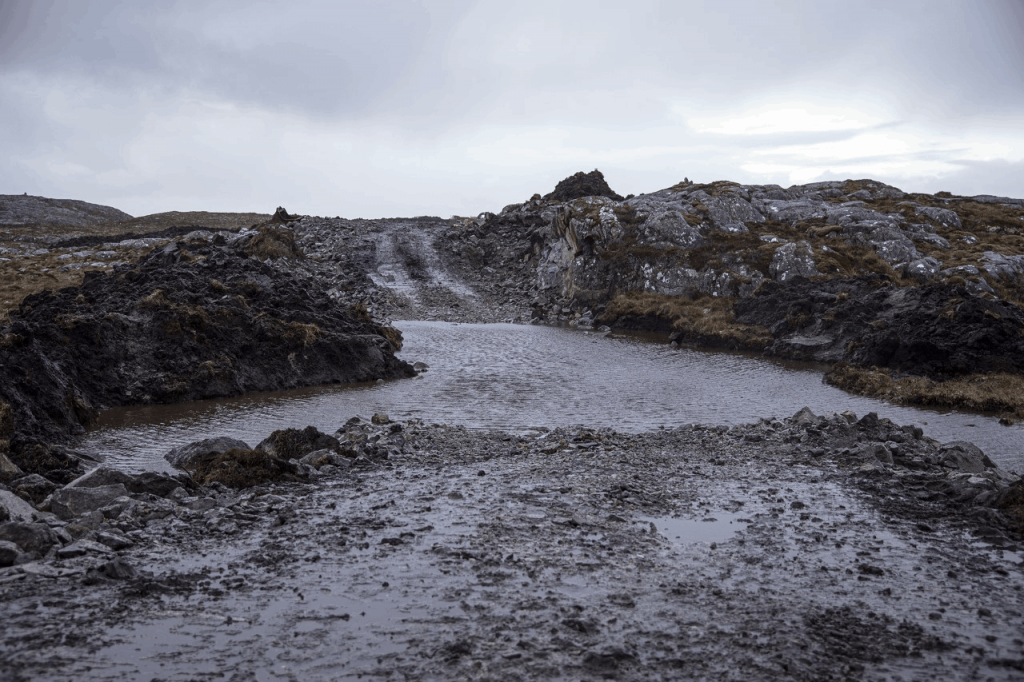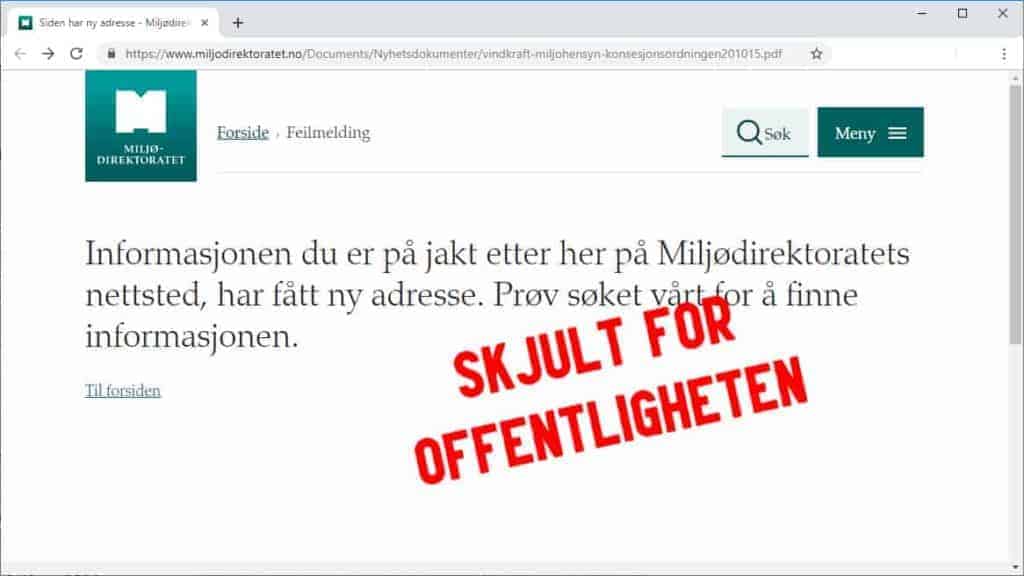The Norwegian Environmental Protection Association (NMF) submitted its consultation opinion on Climate Cure 2030 by the deadline of 30 April 2020.
The Norwegian Environment Agency still has per On 11 June 2020, almost a month and a half after the consultation deadline expired, our consultation opinion has still not been published. Was it too troublesome for the Norwegian Environment Agency?
It is possible to find it, but not in the list posted on the consultation page for Climate Cure 2030. Right after we submitted the response to the consultation, we submitted an updated version and received confirmation from the Norwegian Environment Agency that the updated version should be published. Now a month and a half later, it has still not been posted or updated, also despite reminders that are also not answered. What's up?
Our consultation response was finally posted on the list of received consultation responses long after we posted this case, between one and a half to two months after the deadline for submission expired. There are 35 pages with a list of the consultation responses on the Norwegian Environment Agency's website, and the Danish Environmental Protection Association has ended up on page 34. None of the consultation responses are in any orderly order, so that it is difficult to find them for those who want to see other organisations' consultation responses. Here, the Norwegian Environment Agency has done a very poor and not public-friendly job.

What is special about NMF's consultation response?
The Norwegian Environmental Protection Association believes that Climate Cure 2030 completely lacks feasibility and realism. This is both because the entire report, numerical material and because proposed measures are based on incorrect calculation models and premises.
Much of this is connected to the fact that double accounting of the renewable energy is used to decorate one's own facade, while at the same time leaving out significant parts of the burdens in the climate accounts that end up in other countries' emissions accounts. It is therefore easy to carry out measures that involve increased emissions in other countries in the eagerness to appear particularly clever here at home on the mountain. Climate cure 2030 is a comprehensive document and there is a lot to grasp. We will therefore largely concentrate our consultation response around some very central principles.
- What energy are we going to electrify with?
- How much energy (CO2 equivalents) does it really cost?
- Measures must not increase the load more than it is intended to solve.
- We cannot waste energy unnecessarily.
- The order of measures. We can't start at the wrong end.
- Global costs for measures must be included in the calculation.
- Kortreist is the most environmentally and climate-friendly for both food production and energy.
The Norwegian Environmental Protection Association has a much better climate and environmental profile than the one the government has now proposed.
The Norwegian Environmental Protection Association also raises a number of questions about the basis for Climate Cure 2030, and points out a number of errors and shortcomings in the nearly 1,200-page long report. Here, we ordinary citizens will be stuffed with flight shame and meat shame, while the really big climate sinners are left out and not mentioned.
Climate emissions from farming
The farming industry installs solar panels and electrifies its feeding facilities and thus calls itself emission-free. At the same time that the Norwegian Environment Agency in Climate Cure 2030 singles out agriculture as a climate disaster, the farming industry produces many times more greenhouse gases than agriculture, including the very potent greenhouse gas methane, without it being mentioned with a single word in the report. We demonstrate a climate burden from the Norwegian farming industry that can seriously endanger Norwegian climate emissions, and which is omitted from the report. Is this what the Norwegian Environment Agency does not want to come to light?
Short-distance energy is best and alternative energy sources such as geothermal energy are kept down and hidden
Now it is the maximum development of wind power that will save the climate. Alternative energy sources and energy saving measures are kept down. Why? Perhaps this is what does not fit into the plan of the environmental authorities?
Greenhouse gas emissions from bogs, CO2 and methane.
Myra is our most important storage for greenhouse gases. Norway has committed itself to restoring bogs, but the reality is that we destroy much more bogs than we manage to restore. Much of this is now destroyed due to wind power.
There has been an increased focus on the release of CO2 when encroaching on bogs, but the issues surrounding the many times more potent greenhouse gas methane when encroaching on bogs have not been focused on by any government body. Climate cure 2030 focuses mainly on petroleum, waste landfills and agriculture as sources of methane gas emissions. The fact that wind power's enormous encroachment on bogs is one of today's biggest sources of climate emissions with methane is not mentioned anywhere in the nearly 1,200-page long report. Perhaps this is what the Norwegian Environment Agency does not want to highlight?

Floating roads, wind power's climate argument, a pure bluff...
Floating roads and "best-practice" are brought forward as the developer's argument that their interventions in bogs do not result in such large greenhouse gas emissions. The only problem is that this is never done in practice and we experience maximum destruction and greenhouse gas emissions. Perhaps this is what the Norwegian Environment Agency does not want to hear?
Guarantees of origin - Publicly approved fraud that destroys Norway's climate cuts.
Much of what is wrong with Norwegian energy and climate policy finds its cause in the scheme with guarantees of origin. A foreign electricity customer can, with the best conscience in the world, get all his energy from the nearest coal-fired power plant and at the same time hold up proof from Norway that shows that this power is clean and renewable. At the same time, the same kilowatts are sold by energy companies and politicians here in Norway as just as clean and renewable. The same kilowatt is thus sold in two different places, and in terms of size, this fraud is so large that it corresponds to most of Norway's climate cuts for the next 10 years. Perhaps this is not what the Norwegian Environment Agency does not like to hear.

SF6 gas – The climate disaster that can destroy Norway's total climate goals
SF6 gas, or Sulfur HexaFluoride is a gas that is used as an insulator in electrical components and is widely used in wind turbines. A Vestas V112-3.45MW has approx. 8 kg of this gas in the turbine, and additional kilograms in other transformers in the turbine tower.
- Problem 1 – Extremely potent greenhouse gas
- Problem 2 – Does not break down
- Problem 3 – Leaks
- Problem 4 - Preferred method of disassembly - blasting
We potentially risk destroying Norway's entire 10-year climate commitment with just 134 wind turbines. Norway already has 833 as of April 2020...
Perhaps this is what the Norwegian Environment Agency does not like to hear?
Accidents and regular leakage of the SF6 gas alone make wind power a formidable climate burden
Only with normal leakage of the SF6 gas from Norwegian wind turbines will much of Norway's climate reduction be eaten up. In addition, fires and other accidents will cause enormous climate emissions. None of this is included in the Norwegian Environment Agency's report Climate cure 2030. Why? Perhaps this is what does not fit into the Norwegian Environment Agency's climate reduction model?
No proper routing for dismantling and waste management from wind power, or guarantee that this will be done at all
Current practice for taking down wind turbines is to blow up or cut down the entire turbine tower and let gravity handle the job. Here there is a great potential for leakage of SF6 gas into the atmosphere, in addition to the entire area being contaminated by glass fiber fragments, microplastics, hydraulic and gear oils and much else. This is also not mentioned anywhere in the nearly 1,200-page long report.
The wind power destroys the power system
Wind power is unstable and requires major upgrades and expansion of the power system, line network, transformer stations, etc. This places further strain on the world's resources and energy needs to manufacture, produce and assemble this infrastructure. Several thousand tonnes of metals go into this which would otherwise not have been necessary, had it not been for the enormous wind power developments. There is a great deal here that the Norwegian Environment Agency should certainly have investigated in the nearly 1,200-page long report, but here too they have failed in their climate accounting.

The Norwegian Environmental Protection Association has included all this and much more in our consultation response to Climate cure 2030
The entire 1,200-page report from the Norwegian Environment Agency seems focused on a few and narrow areas, while several major climate problems are neither investigated nor mentioned. What's happening? The Norwegian Environmental Protection Association's response to the consultation has probably become a little too unpleasant. Is this the reason why all other consultation responses are on the Environment Agency's list, while our consultation response has still not been published, nearly a month and a half later?

Attempts were also made to withhold the Norwegian Environment Agency's report from 2015 on the licensing process for wind power
This report, which was highly critical of NVE's handling of licensing cases for wind power, was for many years absent from the pages of the Norwegian Environment Agency after first being published and published. The Norwegian Environmental Protection Association has had it available for open download since summer 2019 and has also given it to key people in the administration with questions about why it has been withheld. At one point or another, before the government scrapped the National Framework for Wind Power, it suddenly became available again on the Environment Agency's pages without any explanation as to why it had been missing for so many years. Is there a repeating pattern here?
Download NMF's consultation response here:
The Norwegian Environmental Protection Association provides more information on each of the subject areas. Pay attention…





